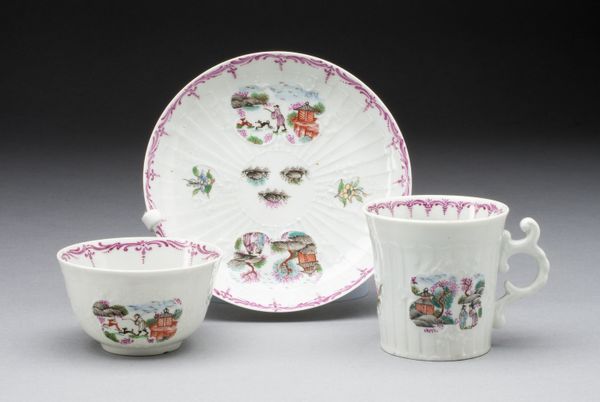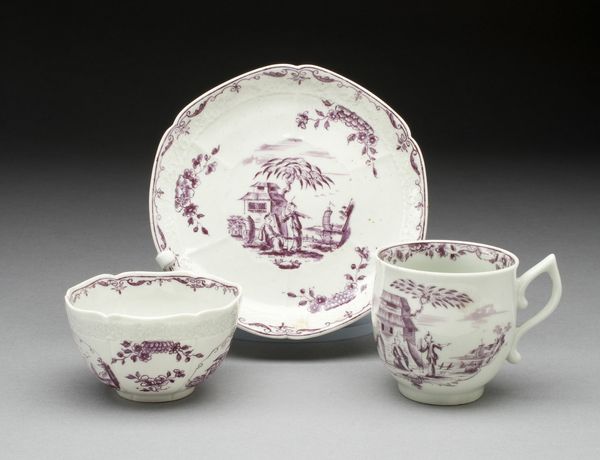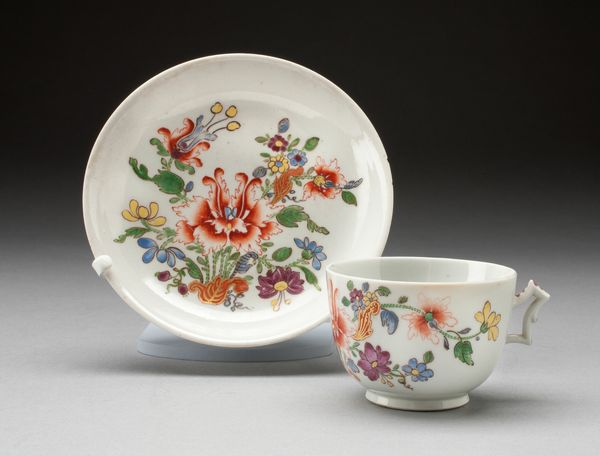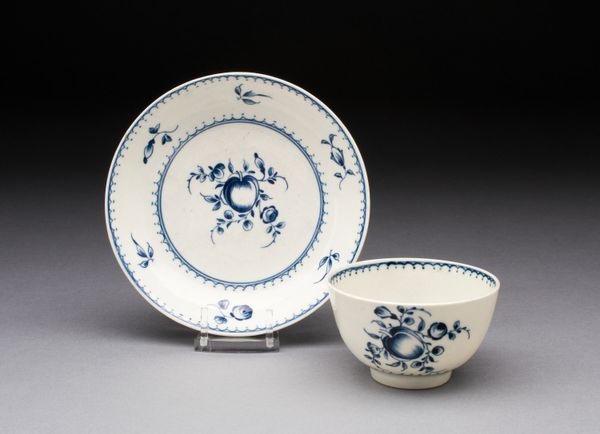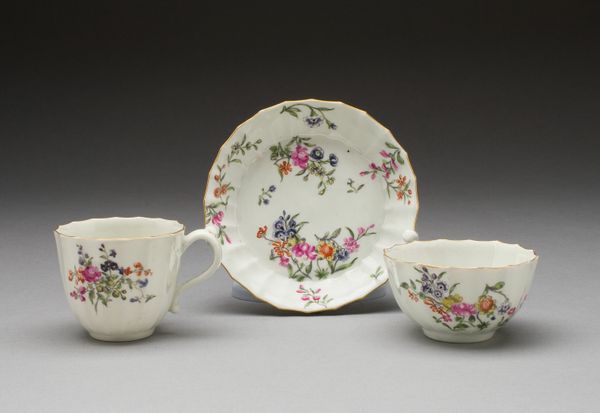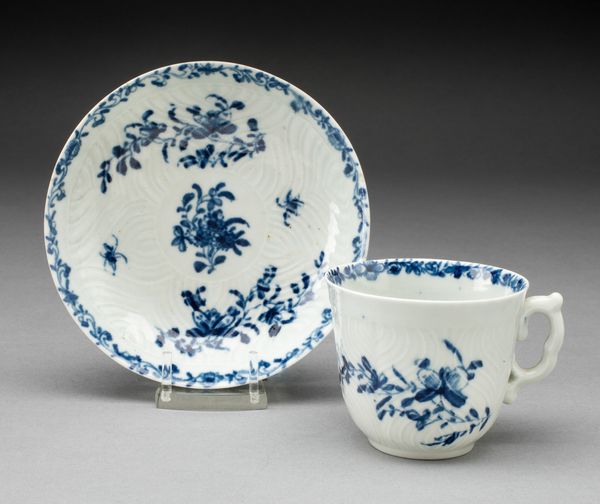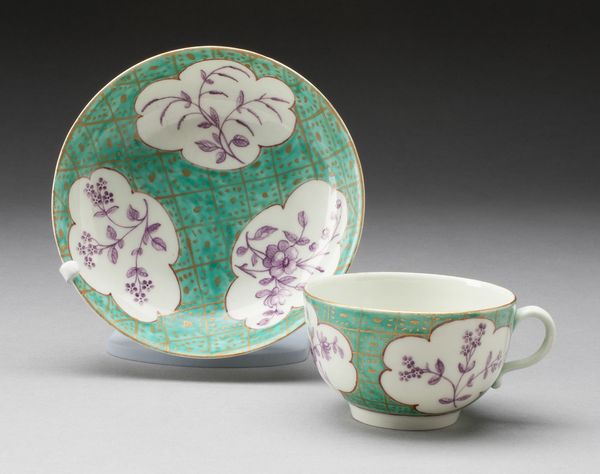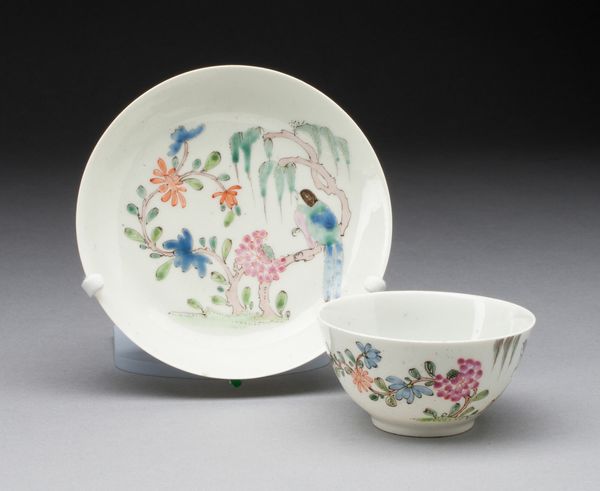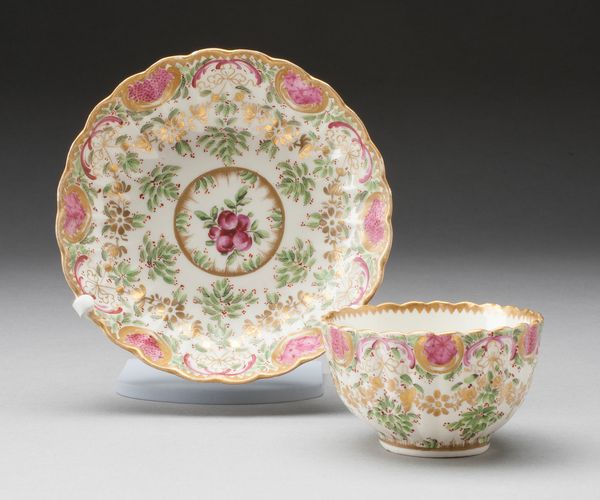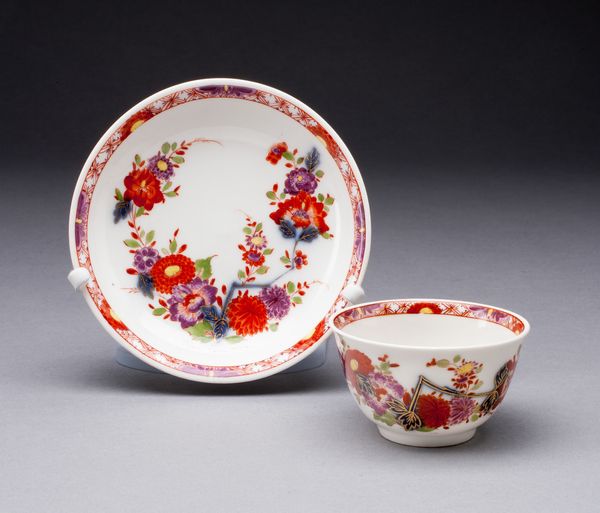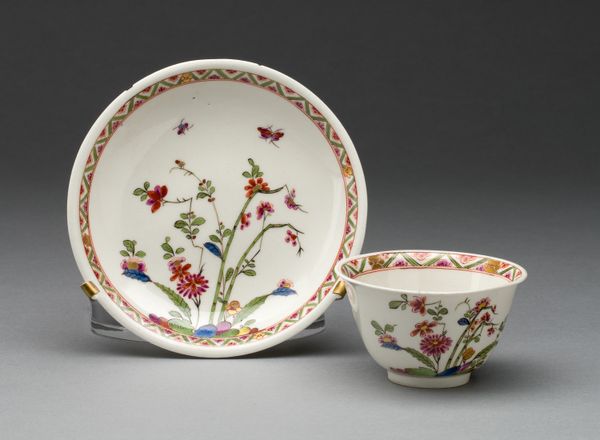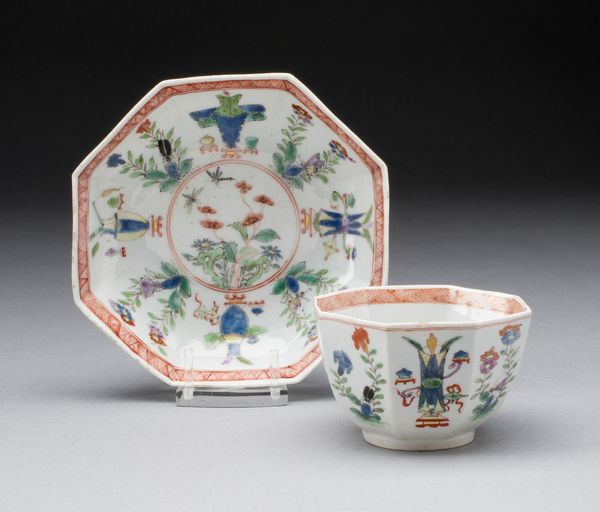
Teacup, Coffee Cup, and Saucer c. 1770
0:00
0:00
ceramic, porcelain
#
ceramic
#
porcelain
#
ceramic
#
decorative-art
#
rococo
Dimensions: Teacup: H. 4.5 cm (1 3/4 in.); diam. 8.3 cm (3 1/4 in.) Coffee Cup: H. 6.2 cm (2 7/16 in.); diam. 6 cm (2 3/8 in.) Saucer diam. 13.4 cm (5 1/4 in.)
Copyright: Public Domain
Curator: I find the delicacy quite striking; what is your initial impression of the piece? Editor: A beautiful little grouping, rather light-hearted. The cup's curves and the ornamentation evoke a sense of playfulness and luxury. It's quite a delicate dance of line and form. Curator: This is "Teacup, Coffee Cup, and Saucer" by the Worcester Royal Porcelain Company, crafted around 1770. The set is made from porcelain and exemplifies the Rococo style so popular at the time. We see this currently exhibited at the Art Institute of Chicago. Editor: Ah, Worcester. Thinking about its production, the social context interests me. Who was consuming this sort of ware? What labor was involved in achieving this finesse? These ceramics served as powerful indicators of status and participation in the global market. Curator: Precisely. It embodies that Rococo ideal with its light, asymmetrical decorations. The gilded accents serve to draw the eye along those winding, almost floral decorations. It's all so meticulously balanced. Editor: Consider the craftsmanship, too. Porcelain production was no simple task. There was specialized labor needed to source the materials and form the items to achieve the smooth surface necessary for applying the decorations and firing the ware. What does this specific design say about the desires and aspirations of 18th-century English society? Curator: Looking closer, one notices how each piece interacts with the other, reflecting patterns while subtly shifting in detail, creating a rhythmic harmony between them. The bright white surface offers the decorations even more vivid expression. It's not merely decorative, but functionally elegant. Editor: I appreciate knowing what it means and the work it represents. When you consider that such decorative objects acted as currency—displayed proudly, passed down as heirlooms, what survives speaks to the material culture of consumption and trade routes across continents. Curator: Indeed, and appreciating that allows us to enjoy both its material beauty and its significant social and cultural context. Editor: Well, it certainly makes me think about the hidden stories within objects like these.
Comments
No comments
Be the first to comment and join the conversation on the ultimate creative platform.
